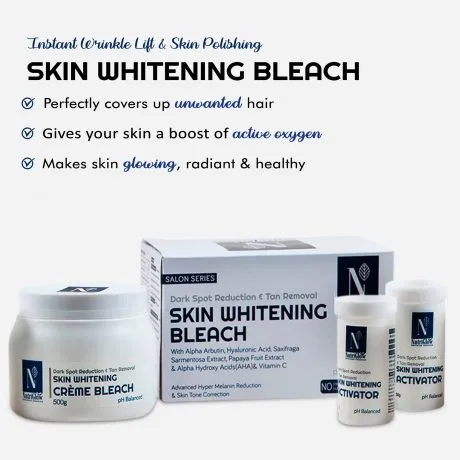Best Skin Whitening Cream Ingredients
Achieving a brighter, more even skin tone is a goal for many, and the market is flooded with skin whitening creams promising remarkable results. But what are the actual ingredients that make these creams effective? Understanding the key components is crucial for making informed choices and achieving the desired outcomes. This guide will explore the top 5 ingredients commonly found in skin whitening creams, their mechanisms, benefits, and potential risks, providing a comprehensive overview to help you navigate the world of skin lightening effectively. The best ingredients work by inhibiting melanin production, the pigment responsible for skin color. By targeting this process, these ingredients can help fade dark spots, reduce hyperpigmentation, and create a more uniform complexion.
Hydroquinone
Hydroquinone is a potent skin-lightening agent and is often considered the gold standard in the industry. It works by inhibiting tyrosinase, an enzyme essential for melanin production. By blocking this enzyme, hydroquinone effectively reduces the amount of melanin, leading to a lightening of the skin. This ingredient is often prescribed by dermatologists for treating conditions like melasma, post-inflammatory hyperpigmentation, and sunspots. Its effectiveness is well-documented, making it a popular choice for those seeking significant skin whitening results. However, it’s crucial to use hydroquinone under medical supervision to ensure safe and effective application.
How Hydroquinone Works
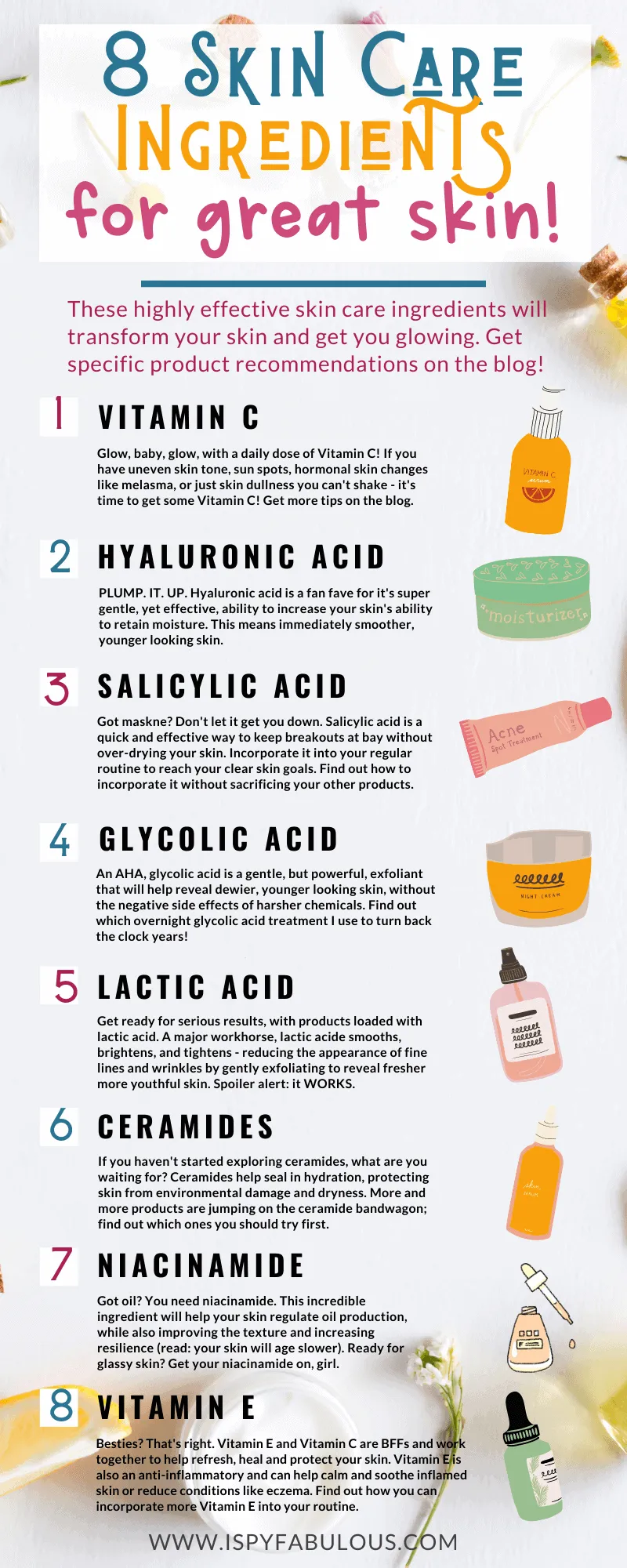
Hydroquinone’s mechanism of action is quite specific. It interferes with the conversion of L-tyrosine to DOPA and subsequently to melanin. This action disrupts the melanogenesis process, leading to a reduction in melanin synthesis. The result is a gradual lightening of the affected skin areas. Hydroquinone primarily targets melanocytes, the cells responsible for producing melanin. By reducing the activity of these cells, it decreases the overall pigment in the skin. The effects of hydroquinone typically become visible within a few weeks of consistent use, with noticeable fading of dark spots and improved skin tone. Proper application, as directed by a dermatologist, is essential to maximize effectiveness and minimize potential side effects.
Benefits and Risks of Hydroquinone
The primary benefit of hydroquinone is its remarkable ability to lighten skin and reduce hyperpigmentation. It can effectively treat various conditions, including melasma, freckles, and age spots. However, it also comes with potential risks. One significant concern is the possibility of ochronosis, a condition that causes the skin to turn a bluish-black color with prolonged use. Other side effects include skin irritation, redness, and increased sensitivity to sunlight. Due to these risks, hydroquinone is often prescribed for short-term use, and dermatologists closely monitor its application. It is crucial to use it exactly as directed and to protect the skin from sun exposure while using hydroquinone.
Retinoids
Retinoids, derived from vitamin A, are another class of ingredients widely used in skin whitening creams. They work by accelerating cell turnover, which helps to exfoliate the skin and remove pigmented cells. This process allows newer, lighter skin cells to surface, leading to a gradual lightening effect. Retinoids are also known for their ability to stimulate collagen production, which can improve skin texture and reduce the appearance of fine lines and wrinkles. They are available in various forms, ranging from over-the-counter retinol to prescription-strength tretinoin, each with varying potencies and effects. Their versatility makes them a valuable addition to many skincare routines.
Retinoid Mechanisms

Retinoids influence skin whitening through multiple mechanisms. Firstly, they increase cell turnover, causing the rapid shedding of pigmented cells. This exfoliation helps to reveal a brighter, more even skin tone. Secondly, they inhibit the production of melanin by modulating the tyrosinase enzyme, similar to hydroquinone, although to a lesser extent. Additionally, retinoids can improve the overall skin health by increasing collagen production, which enhances skin elasticity and reduces the appearance of dark spots and fine lines. These combined effects make retinoids a powerful tool for skin lightening and overall skin rejuvenation.
Types of Retinoids
There are various types of retinoids available, each with different strengths and uses. Retinol, available in many over-the-counter products, is a milder form that converts to retinoic acid in the skin. Tretinoin, a prescription-strength retinoid, is more potent and delivers faster results. Adapalene is another prescription retinoid, known for its effectiveness in treating acne and can also aid in skin lightening. The choice of retinoid depends on individual skin type, tolerance, and the specific skin concerns. It is advisable to start with a lower concentration and gradually increase it as the skin tolerates it better. Use of retinoids often requires a period of adjustment, and proper sun protection is essential.
Vitamin C
Vitamin C, a potent antioxidant, is another key ingredient in many skin whitening creams. It helps to lighten skin by inhibiting melanin production and protecting the skin from free radical damage, which can worsen hyperpigmentation. Vitamin C also has anti-inflammatory properties, which can reduce redness and irritation. Regular use of vitamin C can lead to a brighter, more even skin tone, making it a popular choice for those seeking radiant skin. It is generally well-tolerated, making it suitable for various skin types. Look for products containing stable forms of vitamin C to ensure optimal efficacy.
Vitamin C’s Antioxidant Power
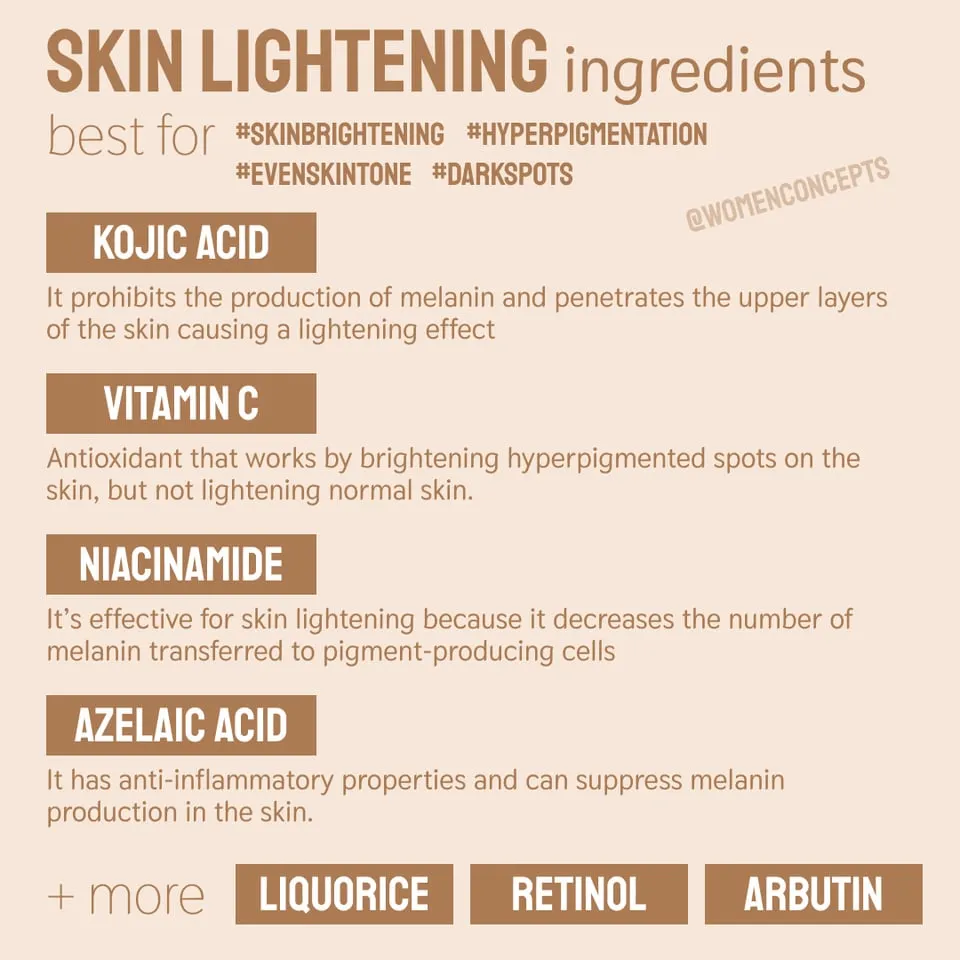
Vitamin C’s antioxidant properties are crucial for its effectiveness in skin whitening. It neutralizes free radicals caused by environmental factors such as pollution and UV exposure, which can contribute to skin damage and hyperpigmentation. By protecting the skin from these stressors, vitamin C helps prevent the formation of dark spots and uneven skin tone. This antioxidant action also supports collagen production, leading to firmer, more youthful-looking skin. Incorporating vitamin C into your skincare routine can significantly improve your skin’s overall health and appearance, giving it a natural glow and reducing the signs of aging.
Different Forms of Vitamin C
Vitamin C is available in several forms, each with varying levels of stability and effectiveness. L-ascorbic acid is the purest and most potent form of vitamin C, but it can be unstable and quickly degrade if not formulated properly. Other forms, such as sodium ascorbyl phosphate, ascorbyl palmitate, and magnesium ascorbyl phosphate, are more stable and gentler on the skin. The choice of vitamin C derivative depends on the product formulation and individual skin sensitivity. When selecting a vitamin C product, consider the concentration, pH level, and packaging to ensure that the active ingredient remains effective. Using products with proper packaging to protect from light and air helps maintain the potency of the vitamin C.
Kojic Acid
Kojic acid is a naturally occurring compound derived from various fungi. It is a popular ingredient in skin whitening creams due to its ability to inhibit tyrosinase, the enzyme responsible for melanin production. By blocking this enzyme, kojic acid helps to reduce the appearance of dark spots, sun damage, and hyperpigmentation, resulting in a brighter and more even skin tone. It’s often used in serums, creams, and soaps. Kojic acid is generally considered effective for treating various forms of hyperpigmentation, including melasma and post-inflammatory hyperpigmentation. It is a popular choice for its effectiveness and relatively mild side effects.
Kojic Acid Benefits
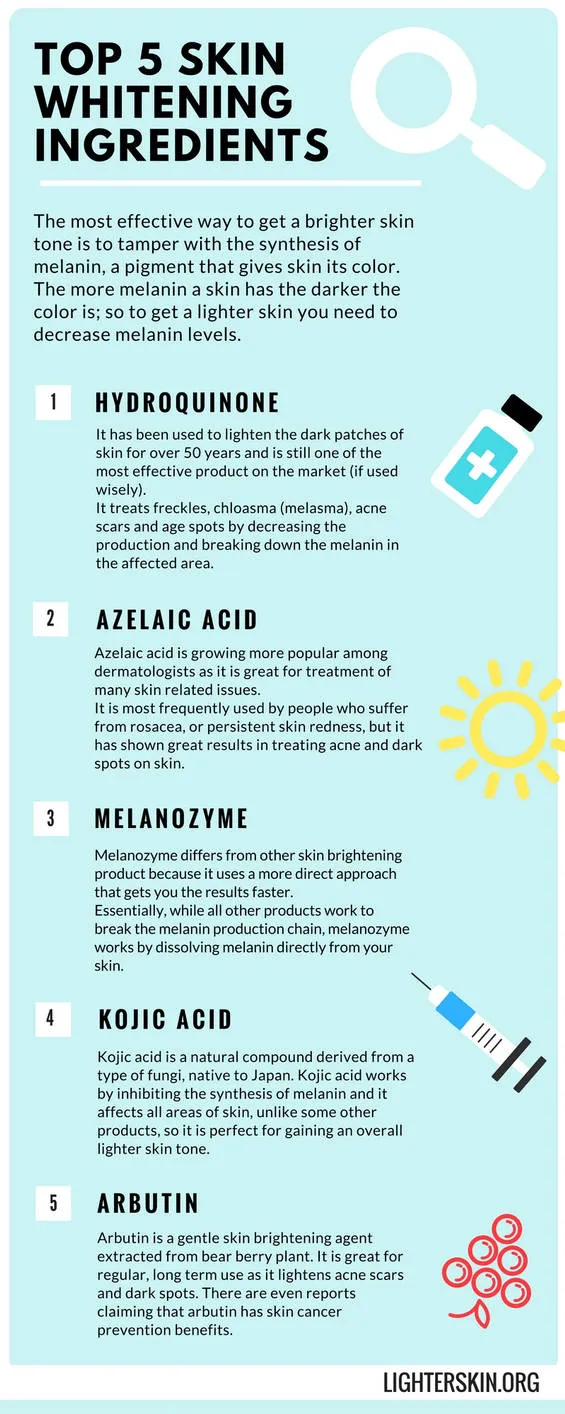
The primary benefit of kojic acid is its ability to lighten skin by reducing melanin production. This makes it an effective treatment for dark spots, age spots, and uneven skin tone. Additionally, kojic acid has antioxidant properties, which protect the skin from free radical damage. This can help improve overall skin health and reduce the signs of aging. It also has anti-inflammatory and antimicrobial properties, which can help with acne and other skin conditions. Regular use of kojic acid can lead to a more radiant and youthful complexion, making it a valuable ingredient in skin whitening products. When used consistently, kojic acid can provide noticeable improvements in skin tone and texture.
Kojic Acid Side Effects
While kojic acid is generally well-tolerated, it can cause side effects in some individuals. Common side effects include skin irritation, redness, and itching. Those with sensitive skin may experience these symptoms more prominently. Prolonged use of high concentrations of kojic acid can lead to increased skin sensitivity to sunlight, making it crucial to use sunscreen while using products containing this ingredient. It’s also important to start with a lower concentration and gradually increase it to assess skin tolerance. If irritation occurs, it’s recommended to discontinue use or consult a dermatologist. Careful usage and sun protection are essential for safe and effective results.
Niacinamide
Niacinamide, a form of vitamin B3, is a versatile ingredient known for its numerous benefits in skincare, including skin whitening. It works by inhibiting the transfer of melanosomes (melanin-containing structures) to skin cells. This action helps to reduce the appearance of dark spots and hyperpigmentation, leading to a more even skin tone. Niacinamide is also known for its anti-inflammatory properties and its ability to improve the skin barrier function, making it an excellent choice for those with sensitive or irritated skin. Its gentle nature and broad range of benefits make it a popular ingredient in many skincare products, including skin whitening creams.
Niacinamide’s Role in Skin Whitening
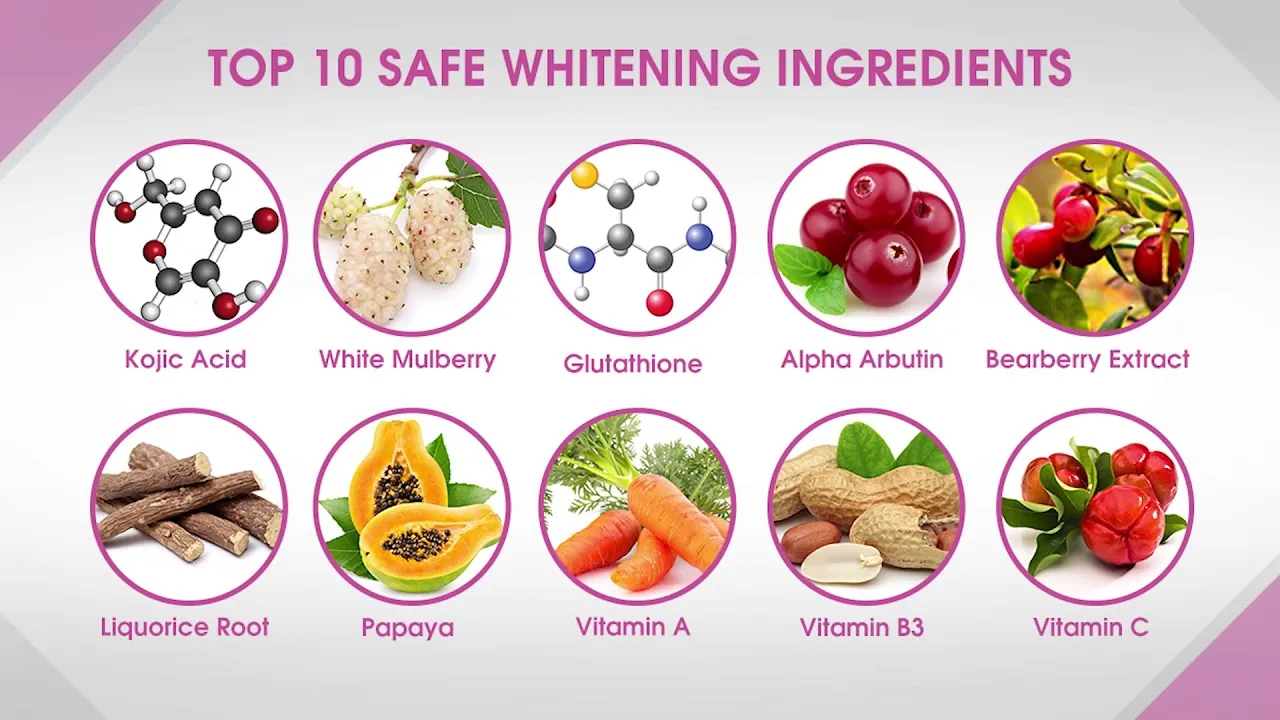
Niacinamide contributes to skin whitening primarily by preventing the transfer of melanin to the skin cells. This mechanism reduces the appearance of dark spots and uneven pigmentation. Unlike some other skin-lightening agents, niacinamide does not directly inhibit melanin production but rather works by preventing the transfer of pigment to the surface. This can lead to a more uniform skin tone and a reduction in the appearance of hyperpigmentation. Moreover, niacinamide can improve skin texture, reduce pore size, and enhance skin elasticity, contributing to a healthier and more radiant complexion. Regular use can result in visible improvements in skin tone and overall skin health.
Niacinamide and Skin Health
Beyond its skin-lightening properties, niacinamide offers numerous benefits for overall skin health. It strengthens the skin barrier, reducing water loss and protecting against environmental stressors. It has anti-inflammatory properties that can help reduce redness and irritation, making it suitable for those with sensitive skin. Niacinamide also helps regulate oil production, reducing the appearance of pores and preventing acne breakouts. Regular use can improve skin texture, reduce fine lines and wrinkles, and promote a more even skin tone. It’s a versatile ingredient that can benefit various skin types, making it a valuable component in any skincare routine.
Conclusion
Choosing the right ingredients is crucial for achieving effective and safe skin whitening results. Hydroquinone, retinoids, vitamin C, kojic acid, and niacinamide are among the top ingredients to consider. Each has its unique mechanisms and benefits. Understanding these ingredients helps you make informed choices and create a personalized skincare routine. Always consult with a dermatologist to determine the best ingredients for your skin type and concerns and to ensure safe usage. With the right combination of ingredients and professional guidance, you can achieve a brighter, more even skin tone and maintain healthy, radiant skin.
